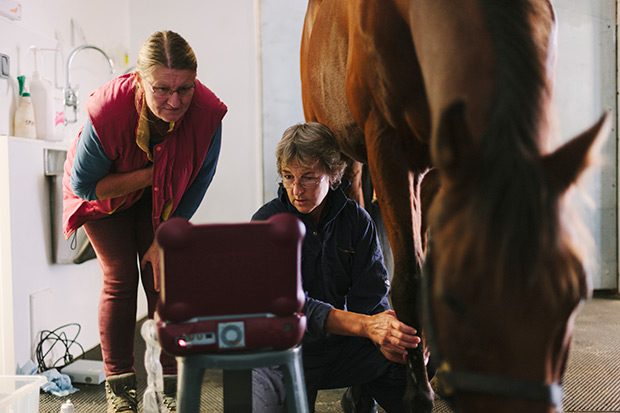The American Association of Bovine Practitioners (AABP) and the American Association of Equine Veterinary Technicians and Assistants (AAEVT) have introduced new guidelines aimed at enhancing the utilization and retention of veterinary technicians. These guidelines, unveiled this spring, delineate specific responsibilities and supervision levels for credentialed veterinary technicians (CrVTs) within their respective fields.
Understanding the Role of Veterinary Technicians
Travis Otremba, president of AAEVT and a certified veterinary technician at Ocala Equine Hospital, emphasizes the importance of these guidelines. “There is a lack of knowledge regarding what a trained, credentialed veterinary technician is and their educational background,” Otremba explained. The guidelines aim to educate doctors, practice owners, and managers on effectively utilizing technicians, potentially increasing productivity significantly. The AABP similarly noted that CrVTs are often underutilized compared to those in companion animal practices.
Maximizing Efficiency with Bovine Veterinary Technicians
The AABP’s new guidelines, titled “AABP Guidelines for Credentialed Veterinary Technicians in Bovine Practice,” provide a comprehensive task list outlining common procedures in bovine medicine and the required supervision level. For instance, CrVTs can perform general anesthesia under direct supervision, while tasks like castration can be conducted under indirect supervision. Only veterinarians can handle procedures such as intra-articular drug administration or joint flushes.
Dr. K. Fred Gingrich II, executive director of AABP, highlighted the benefits of leveraging veterinary technicians: “Utilizing technicians and delegating tasks improves the speed of animal care, benefiting everyone from veterinarians to technicians and animal owners.” He also noted that recognizing and utilizing CrVTs within their scope of practice can improve technician retention and generate more revenue per veterinarian, allowing for higher wages for CrVTs.
Enhancing Equine Veterinary Technician Utilization
The AAEVT, in collaboration with the American Association of Equine Practitioners (AAEP), created “The Guidelines for Utilization of EQ CrVT.” This document, based on the 2023 American Animal Hospital Association’s (AAHA) Technician Utilization Guidelines, aims to address the low percentage (4%) of CrVTs in equine practice. The guidelines categorize skills into three levels, reflecting the training and capabilities of CrVTs as they progress in their careers. For example, Level 1 includes administering vaccines, Level 2 involves collecting samples and performing laboratory tests, and Level 3 encompasses metabolic patient monitoring.
AAEVT President Travis Otremba noted that in equine medicine, veterinarians might be hesitant to delegate tasks due to a desire for control, which can lead to underutilization of CrVTs. “If technicians or assistants are not used to their fullest extent, job satisfaction can wane, leading to higher turnover rates,” Otremba explained. Effective utilization and competitive wages or benefits can enhance retention in equine veterinary medicine.
Educational Implications and Future Directions
J. David Sessum, a licensed veterinary technician and program manager for the Veterinary Science Certificate Program (VSCP) at Texas A&M University’s Agrilife Extension, served on the task force that developed the AABP’s guidelines. He highlighted that these guidelines will allow veterinary technology programs to tailor their curriculum to meet the needs of bovine practitioners better, producing graduates well-prepared for careers in bovine and equine sectors.
Sessum advises CrVTs seeking employment to look for veterinarians who are aware of and implement these guidelines. “Finally, here’s something that we’ve been asking for a long time—to be valued and recognized, and it’s happening,” Sessum said, expressing optimism for the future of the profession.
In summary, the new guidelines from AABP and AAEVT represent a significant step towards improving the utilization, recognition, and retention of veterinary technicians in bovine and equine practices, ultimately enhancing patient care and practice efficiency.



